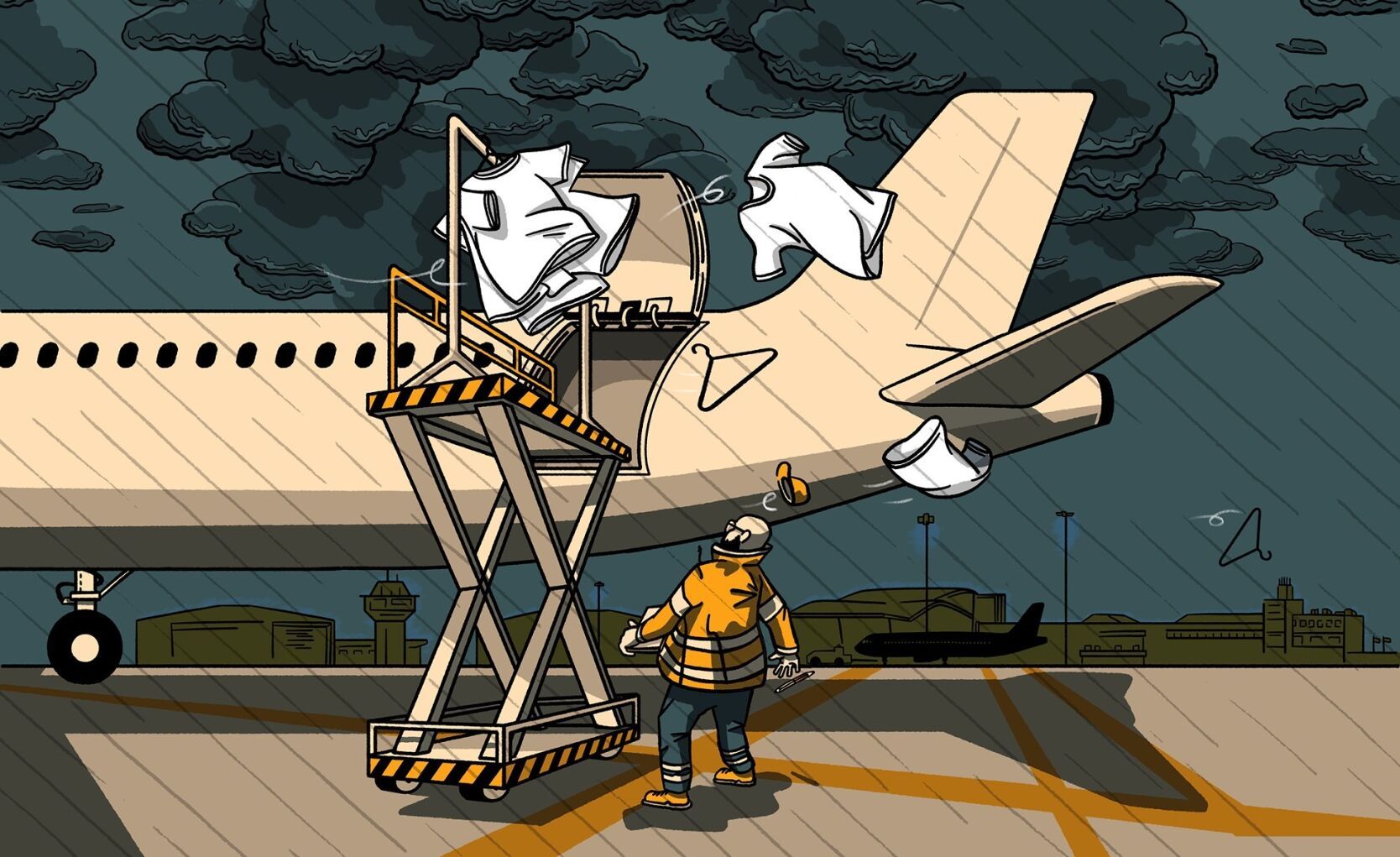Following in Zara’s slipstream: the airborne fashion of other brands
Zurich, Lausanne, 18. December 2023
 ©
opak.cc
©
opak.cc
Currently, only a few companies voluntarily report on how they transport their products. And public statistics, especially from the largest import markets in Europe and North America or major manufacturing countries such as China, are not detailed enough to present an accurate picture. Therefore, our follow-up investigation into airborne fashion should not be interpreted as being a complete or even representative picture of the current situation. But it does give a clear indication of how important air freight is to individual brands. Unless otherwise specified, the data mentioned refers to the last 12 months for which data is available.
What evidence is there of air freight being used by other fashion retailers?
We have already highlighted in our investigation the extent to which Inditex and Shein rely on air freight. Compared to this, the pattern we see emerging from the customs data analysed is a fairly mixed one.
With regard to some major direct competitors in the fast-fashion segment, the data available indicates a comparatively low rate of airborne fashion. From Bangladesh, for example, the current rate for this seems to be below 2 per cent for major customers such as H&M or Primark, and below 3 percent for Bestseller (Jack Jones, Vero Moda). By comparison, the figure for Inditex is more than 20 percent this year.
On the other hand, we found evidence of a higher incidence of airborne fashion from the Next group. From its imports from Bangladesh, around 10 percent come by air, and from those from India around 20 percent. The world’s third-largest fashion group, Fast Retailing (Uniqlo), also has its fashion products flown around the world, with almost 20 percent of imports from Vietnam likely to arrive by plane.
Among the major sportswear fashion groups, Lululemon stands out in particular, transporting around 30 percent of its products manufactured in Vietnam and Sri Lanka by plane. Compare this to competitors Nike and Adidas for which we observed a smaller proportion of transport by air from Vietnam – less than 5 percent. And Puma informed us that their flight rate for products from Vietnam is currently a mere 0.5 percent.
Even underwear arrives by plane, with about a quarter of the products made for Victoria’s Secret in Vietnam and as much as a third of products from Sri Lanka being transported in this way. The underwear giant Calzedonia also has products manufactured on the island, with the proportion of air transport in the range of 5 to 10 percent.
Transparency? Rarely found
This evidence shows us that airborne fashion is not only widely prevalent at Inditex and Shein, but also in other parts of the apparel industry. However, the fact that some of the major direct competitors use only a small proportion of flights provides a glimmer of hope. How different airborne fashion is dealt with in the industry can also be seen in the way companies communicate about it.
Next and Victoria's Secret are taking a lead from Inditex and Shein and talk no more than in general terms about their transport emissions. It’s a similar story with Fast Retailing. This company, which has Roger Federer as a brand ambassador for its main brand Uniqlo, did respond to our enquiry, but did not share any details about airborne fashion. The company refers instead to its overall climate goals and involvement in an initiative to cut transport emissions. However, this commitment has not presented progress so far; quite the opposite, as transport emissions have increased by 55 percent since 2019.
Other companies are taking a more proactive approach to the issue. Bestseller states that its use of air freight has been declining for four years and that its proportion of the total freight transported is currently 1.04 percent. As a result of this, transport-related emissions have dropped by 55 percent since 2018. H&M’s sustainability report also shows a significant reduction in air-freight emissions (–51 percent) in the last financial year. When asked, Primark explained that it generally places orders with long lead times and allows sufficient time for sea transports. Air freight would therefore be used infrequently. However, the company did not give us any figures on this.
Nike mentions a slight increase in air freight used for the inflow of goods in 2022, but the volume has remained low and below the pre-pandemic level. Lululemon at least identifies air freight as the main contributor to the very high proportion of its total emissions accounted for by transport (25 percent) and is announcing a task force to shift freight transport from air to see. But it is difficult to pin down these announcements and data without having specific figures to go on.
Only a few companies provide more precise details on the current proportion of their freight transported by air. Calzedonia puts this at a massive 20 percent of the total volume, which means that the emissions reported are correspondingly high. On the other hand, the proportion reported by Adidas is significantly smaller: 2 percent in 2022.
We found that Puma provided the most detailed information. The company reports a reduction in its air freight rate from 3 percent before the pandemic to 1 percent today, provides detailed figures on emissions for each mode of transport, and is the only company to tell us the total amount of air freight it transports. Not to mention that Puma has set a specific reduction target: cutting the proportion of air freight by half to 0.5 percent by 2025.
The great disparities between these companies underline how unnecessary airborne fashion is also from a business point of view. We are calling on all brands to phase out air freight and provide transparent information about the means of transport they use and their emissions.

